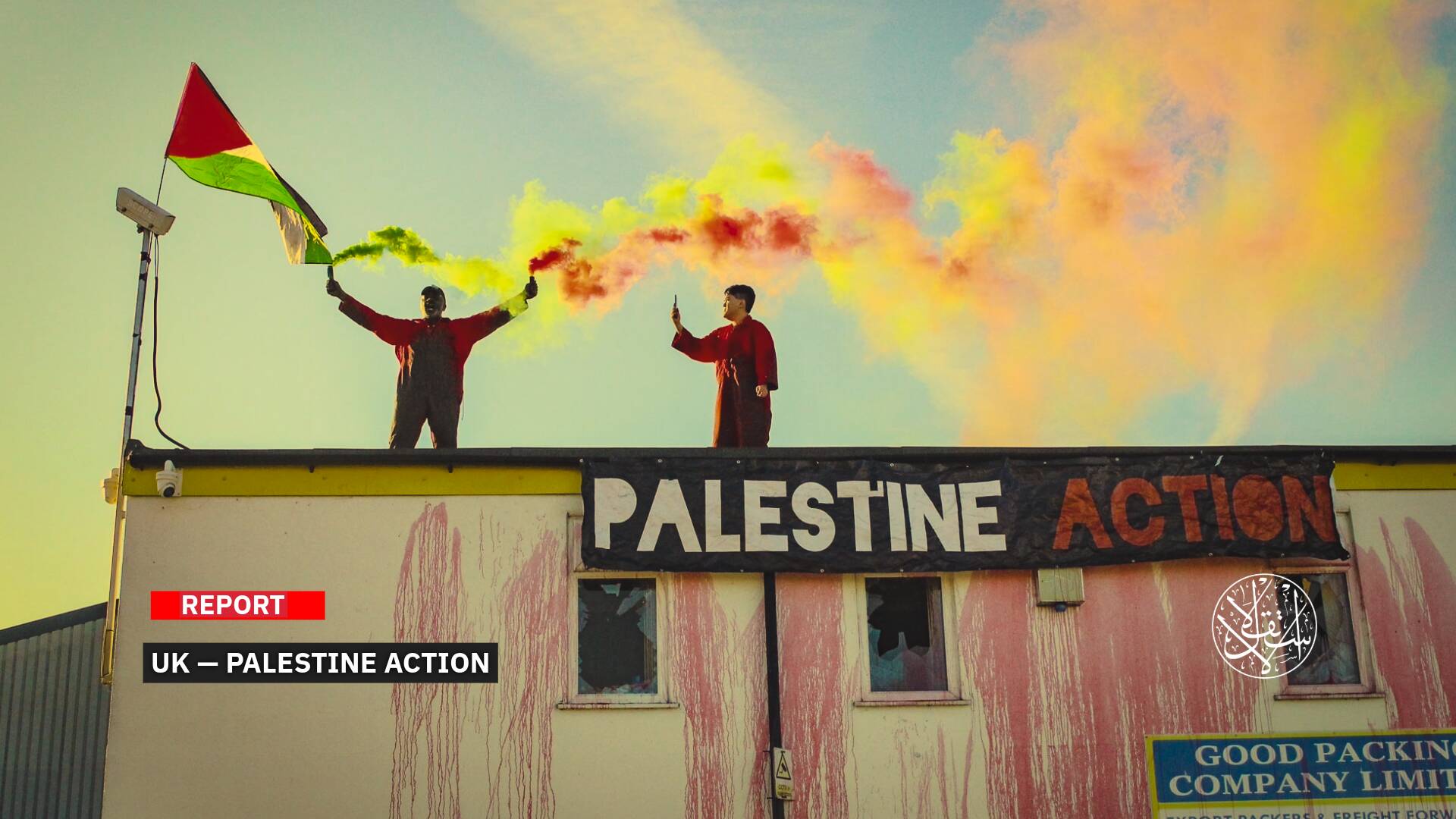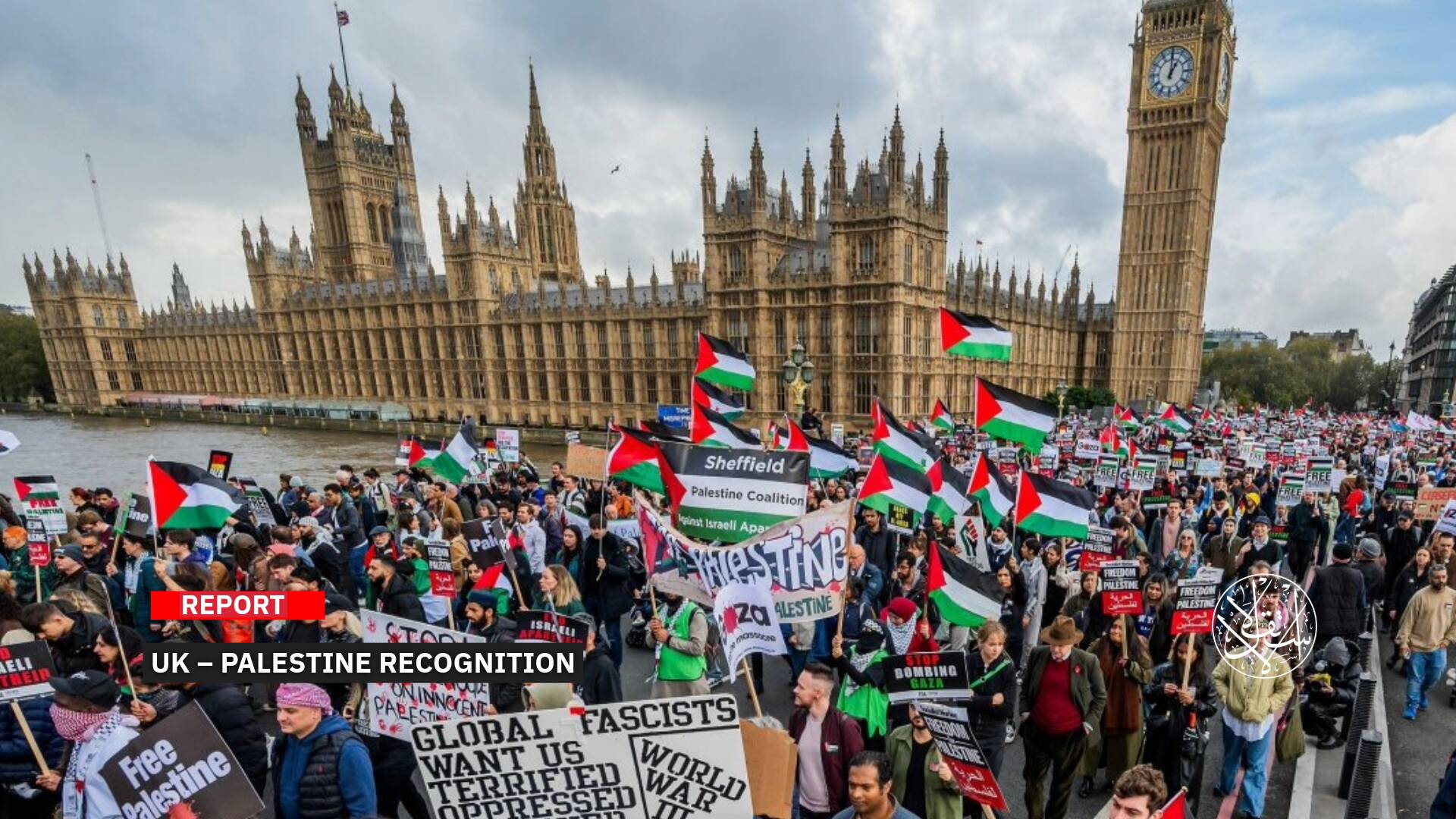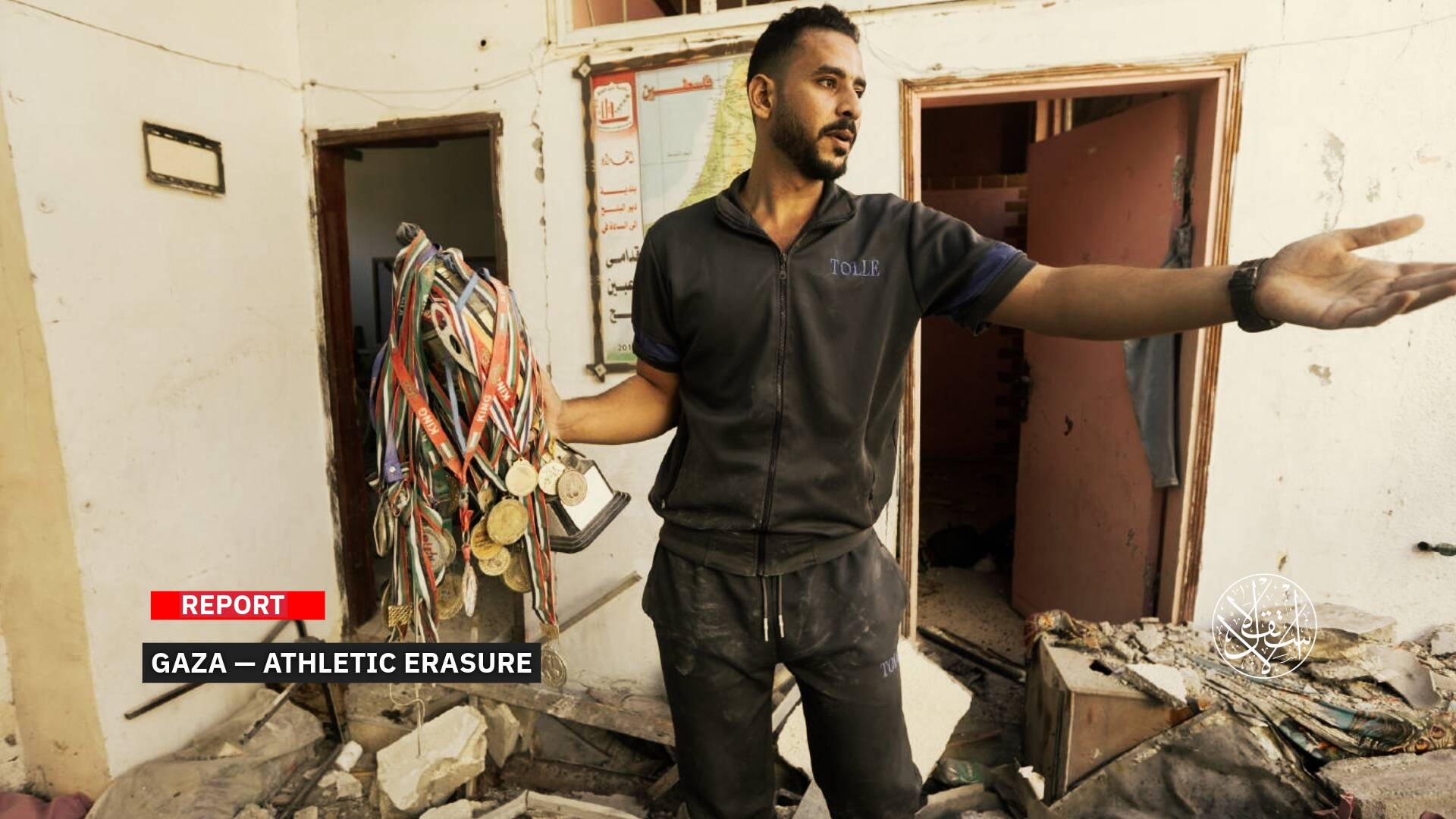With 70 Percent of Buildings Destroyed, What Lies Ahead for Gaza’s Reconstruction?

Hundreds of thousands of Palestinians have been left homeless since the offensive began on October 7, 2023.
In a moment that felt frozen in time, 40-year-old Palestinian Ahmed Aqil stood in shock, his eyes fixed on the ruins of what was once his home in northern Gaza.
Forced to flee south to Gaza City as Israeli bombardment intensified, Aqil was among those who returned after the ceasefire agreement—only to find his house reduced to rubble.
Speaking to Al-Estiklal, he recounted the years of effort and hard work that went into building his home, now nothing more than a pile of debris, wondering how long it would take to rebuild.

Scale of Destruction
In the aftermath of a devastating Israeli assault that lasted over 15 months, Palestinians in Gaza are now confronted with an unprecedented level of destruction following the ceasefire on January 19, 2025.
Hundreds of thousands have been left homeless since the Israeli war began on October 7, 2023, forced to seek shelter in makeshift tents that offer little protection from the scorching heat of summer and the bitter cold of winter.
Across the besieged enclave, where refugee camps blend into urban landscapes, drone footage reveals an endless expanse of rubble. According to UN estimates, rebuilding Gaza will require billions of dollars. A UN assessment in January 2025 found that clearing more than 50 million tons of debris left behind by Israeli bombardment could take 21 years and cost up to $1.2 billion.
The scale of destruction is staggering. The Palestinian Health Ministry in Gaza estimates that 10,000 bodies remain buried beneath the wreckage. Meanwhile, a UN Development Programme (UNDP) report from October 2024 stated that the war has erased 69 years of development in Gaza. Another UN report from 2024 projected that reconstructing the destroyed homes alone could take until at least 2040, if not longer.
Satellite imagery released by the United Nations Satellite Center (UNOSAT) in December 2024 indicated that two-thirds of Gaza’s pre-war buildings—more than 170,000 structures—have been damaged or completely leveled, accounting for approximately 69% of the total. The number of affected housing units is estimated at 245,123.
Beyond airstrikes, the Israeli Occupation army also razed vast areas to create buffer zones, clearing a one-kilometer strip along Gaza’s border, the Netzarim Corridor dividing the north and south, and the Philadelphi Corridor along the Egyptian border.
The UN Office for the Coordination of Humanitarian Affairs (OCHA) reports that more than 1.8 million people in Gaza now require emergency shelter. A joint report by the UN and World Bank estimated that war-related infrastructure damage had reached $18.5 billion by January 2024, affecting homes, businesses, and essential services such as education, healthcare, and energy. No updated estimate has been provided since.
OCHA’s latest update in January 2025 highlighted that less than a quarter of Gaza’s pre-war water supply remains functional, while at least 68% of the road network has been damaged. UN-analyzed satellite images further revealed that more than half of Gaza’s agricultural land—critical for feeding a war-ravaged population—has been rendered unusable. The destruction of orchards, crop fields, and vegetable farms has exacerbated an already dire hunger crisis.
The UN’s Food and Agriculture Organization (FAO) reported in 2024 that 15,000 livestock—over 95% of Gaza’s total—had been slaughtered or perished, including nearly half of the region’s sheep.
Government data from Gaza’s media office indicates that Israeli Occupation attacks have destroyed over 200 government buildings, 136 schools and universities, 823 mosques, and three churches. The health sector has also been decimated, with only 17 out of 36 medical facilities partially functioning as of January 2025.
Amnesty International’s Crisis Evidence Lab has highlighted the extent of devastation along Gaza’s eastern border, where more than 90% of buildings—over 3,500 structures—were damaged or destroyed by May 2024.
Reconstruction?
In light of this staggering devastation, Gaza’s reconstruction remains an open wound, with no clarity on how—or if—it will become a priority for Arab and Western governments.
The first phase of the three-stage ceasefire agreement made no mention of rebuilding Gaza. Discussions on the issue are expected in the third phase, but in the meantime, Palestinians have begun clearing debris with whatever tools they can find, searching for their missing loved ones amid the ruins.
Qatar has begun sending fuel and food parcels to Gaza, while other key Arab nations remain entirely absent from the humanitarian scene.
Many Palestinians expect Qatar to play a role in Gaza’s reconstruction, just as it did after 2012, when then-Emir Sheikh Hamad bin Khalifa made a rare and historic visit to the enclave.
However, concerns persist that Arab countries will focus solely on humanitarian aid—such as food, medicine, and temporary shelters—without committing to long-term reconstruction efforts.
Some observers said nations that remained distant during the war, including Egypt and Saudi Arabia, are unlikely to take the initiative on rebuilding unless driven by their own strategic interests.
There is also speculation that newly elected U.S. President Donald Trump could push Saudi Arabia, Qatar, and other Gulf states to finance reconstruction, while Egypt would play an executive role through specialized companies.

After the Israeli Occupation’s May 2021 assault on Gaza, known as the “Sword of Jerusalem,” head of the Egyptian regime Abdel Fattah el-Sisi sought to leverage the crisis to improve his international image, expand his regional influence, and secure domestic gains.
On June 11 of that year, The Times of Israel said Sisi aimed to use Gaza’s reconstruction to strengthen his influence.
Egypt’s close ties with “Israel” have long been a strategic priority for Cairo, largely due to the significant benefits it receives from Washington in return. Since signing the peace treaty with Tel Aviv in 1979, Egypt has received $1.3 billion in annual U.S. military aid, ostensibly for counterterrorism and border security—measures that also bolster Israeli Occupation’s security.
Upon taking office on January 20, Trump said Gaza needs to be rebuilt differently and “some great things” could be done there, without elaborating.
“I looked at a picture of Gaza, it’s like a massive demolition site [..] It’s gotta be rebuilt in a different way.”
When asked whether he would assist in rebuilding the devastated enclave, Trump said he “might” be able to have a role in Gaza, praising it as having a “phenomenal location, on the sea” and “the best weather.”
Meanwhile, Ali Abu al-Awar, a professor of regional and international conflict resolution, emphasized that Gaza’s reconstruction is a national, regional, and international responsibility that everyone must take part in.
“Everyone stood by helplessly and silently as Israeli Prime Minister Benjamin Netanyahu destroyed Gaza. Now, they must contribute to rebuilding it,” he added in a televised interview.
“We don’t want mere rhetoric, slogans, or empty demands. Gaza must undergo a full reconstruction and rehabilitation process, including new strategies, decisions, and leadership.”
The reconstruction of Gaza is further complicated by the ongoing Palestinian division and the refusal of Washington, Western nations, and some Arab countries to accept Hamas remaining in power.
The situation is made even more challenging by Israeli Occupation’s rejection of Mahmoud Abbas’s Palestinian Authority, which it accuses—along with Hamas—of “harboring terrorism.”
So, “Israel” may impose obstacles to the entry of materials, equipment, and even funds essential for rebuilding the enclave.

How Long Will It Take?
The rebuilding process in the devastated Palestinian territory will “take an awful lot of time” despite the promised surge in humanitarian deliveries, a UN official in Gaza has warned.
“We're not just talking about food, healthcare, buildings, roads, infrastructure. We've got individuals, families, communities that need to be rebuilt,” Sam Rose, acting director of the UN Agency for Palestinian Refugees (UNRWA) in Gaza, told the BBC.
“Every person in Gaza has been traumatized by what's gone on. Everyone has lost something. Most of those homes are now destroyed, most of the roads are now destroyed,” he added. “It's going to be a long, long process of rehabilitation and rebuilding.”
“What we see in Gaza is something that we have never seen before in the history of urbanism,” said Mark Jarzombek, an architectural history professor at The Massachusetts Institute of Technology who has studied post-World War II reconstruction. “It’s not just the destruction of physical infrastructure, it’s the destruction of basic institutions of governance and of a sense of normality,” he told Bloomberg.
“The cost of rebuilding will be prohibitive. Construction sites on this scale have to be empty of people, creating another wave of displacements. No matter what one does, for generations Gaza will be struggling with this,” Jarzombek added.
However, despite the vast destruction, some Palestinian experts, including Gaza Municipality spokesperson and engineer Asem al-Nabih, question reports predicting prolonged debris removal and reconstruction.
In a video posted on his X account, al-Nabeh argued that such estimates fail to consider key factors affecting rubble removal and rebuilding efforts.
He emphasized that the availability of workers, daily working hours, and access to heavy machinery are crucial. “If the necessary equipment and workforce are available, rubble clearance could take at most a year,” he asserted.
Some Palestinians believe that the extended timelines and high-cost estimates presented in international reports are part of psychological warfare.
Researcher Ali Abu Rizq said some of these reports are “far from innocent,” aiming to instill a deeper psychological defeat and push people toward complete despair.
Such narratives are meant to convince Gaza’s youth—already disillusioned by the world’s abandonment—that life in the Strip is no longer viable, ultimately encouraging voluntary migration after the failure of forced displacement attempts.
As evidence, he pointed to past wars, such as the 2014 aggression on Gaza, when reports claimed that rubble removal would take 7 to 10 years—predictions that proved inaccurate.
He further noted that in Turkiye, just a year and a half after the devastating February 2023 earthquake centered in Kahramanmaras, 75% of the debris—totaling 150 million tons—had already been cleared.
“The key issue is opening the crossings, lifting the blockade, and allowing Arab companies to contribute to reconstruction and debris removal, as Egyptian firms did after the 2021 war on Gaza,” he added.
Sources
- Rebuilding Gaza: Why reconstruction is a multi-billion dollar challenge
- New UN report: Impacts of war have set back development in Gaza by as much as 69 years
- GAZA STRIP INTERIM DAMAGE ASSESSMENT
- Gaza: Immediate action must combine emergency relief with the restoration of local food production
- Amnesty International investigation concludes Israel is committing genocide against Palestinians in Gaza
- Sissi eyes Gaza rebuilding to enhance Egypt’s regional clout
- Trump suggests his plan for Gaza Strip is to ‘clean out the whole thing’
- Trump’s Gaza proposal rejected by allies and condemned as ethnic cleansing plan
- Gaza Reduced to 42 Million Tonnes of Rubble. What Will It Take to Rebuild?











